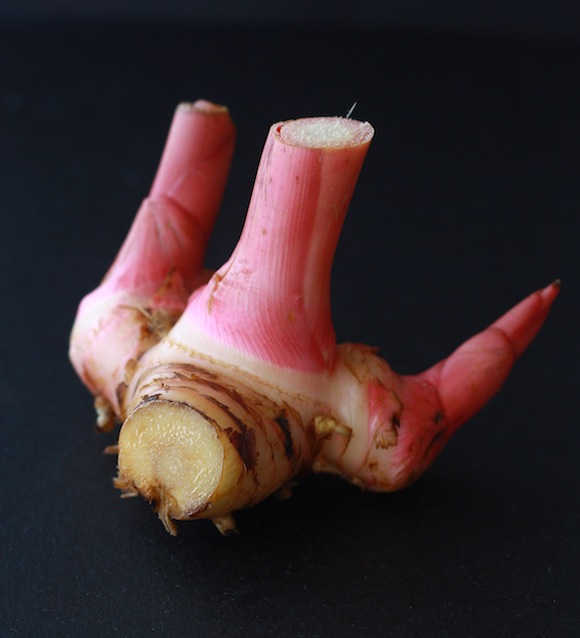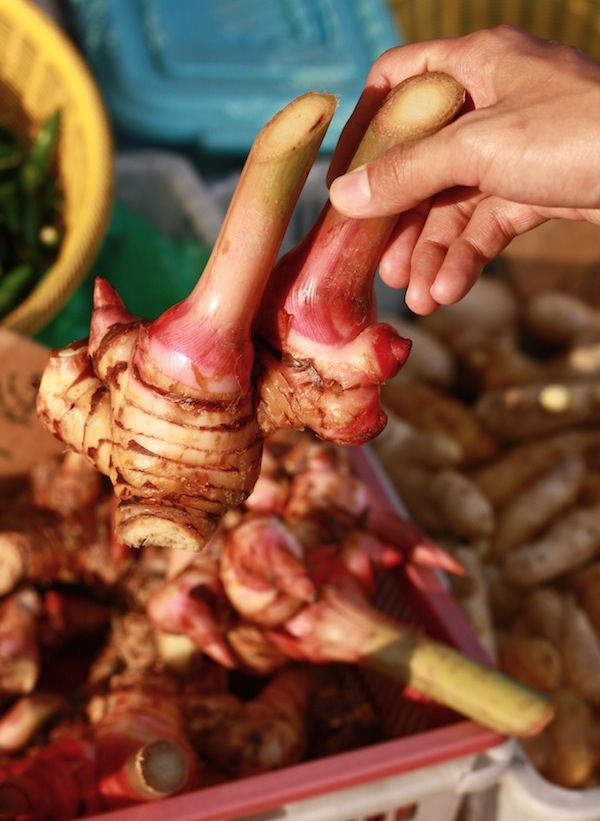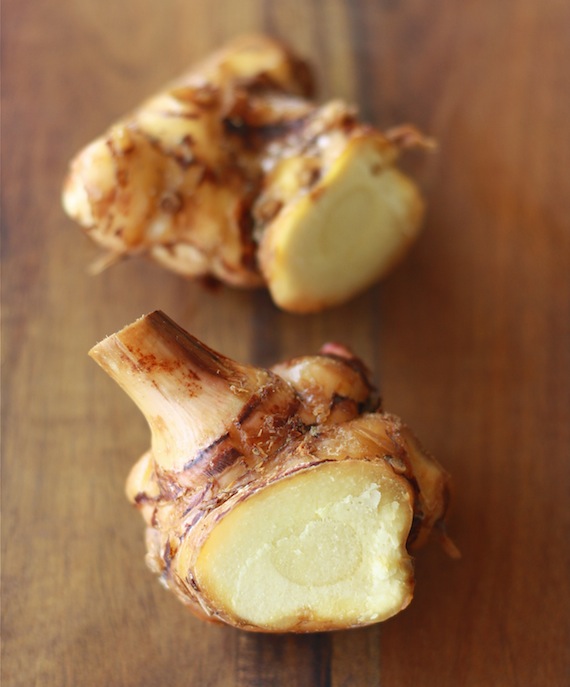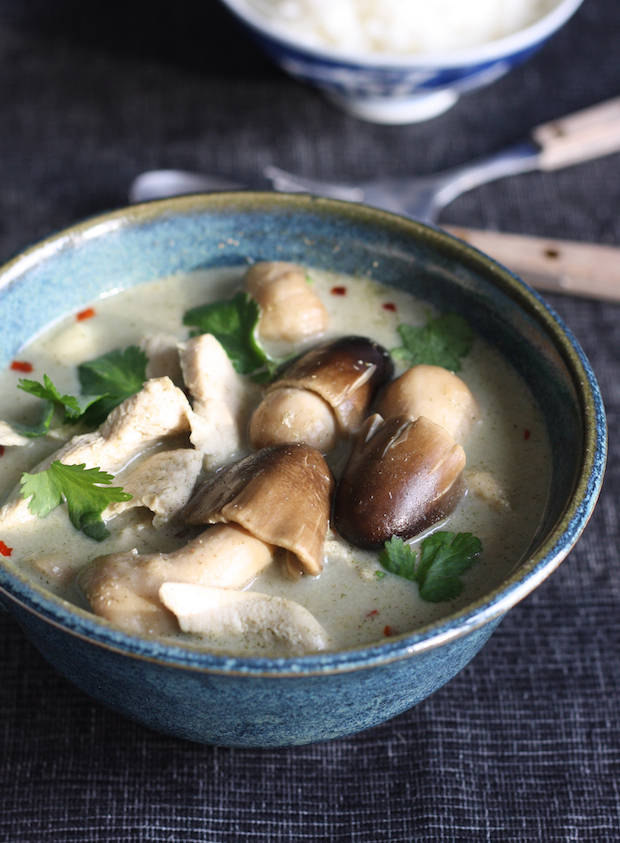Slice into the fresh, fibrous rhizome of a Galangal plant, lift the white flesh to your nose, and take a deep breath. What does the spice smell like? Maybe gingery or peppery; a shade of lemon with a trace of earthy pine needles; hints of warm tropical flowers and fruits? The aroma of galangal is mysterious, but pleasant. A distinct aroma that no two people will describe the same.
Place a sliver of galangal in your mouth, and you’ll taste that curious, sharp, sweet aroma on your tongue for just a moment before the burn – a burn more potent than that of ginger – reminds you that galangal is a spice.
Place a sliver of galangal in your mouth, and you’ll taste that curious, sharp, sweet aroma on your tongue for just a moment before the burn – a burn more potent than that of ginger – reminds you that galangal is a spice.

That’s Greater Galangal, one of the four types of galangal – all of which differ in appearance, aroma, taste, and use. Greater galangal (aka Alpinia galangal, Thai galangal, lengkuas, laos, or blue ginger 高良姜) is the common spice you’ll find in Southeast Asian kitchens. It may be sliced into chunks or slivers and added to soups or stir-fries, or pounded into sambals or curry pastes. The spice is also frequently added to seafood dishes to balance out the ‘fishiness’ flavor.
Contrary to its name, greater galangal tends to play a subtle role in Southeast Asian dishes. The spice is meant to complement, not dominant the flavor. Combined with many other spices & herbs, galangal is one of the key ingredients in dishes such as Thai Tom Yum soup, Malaysian Asam Laksa, Cambodian Samlor Kor Ko soup, Vietnamese Hue cuisine, and various Indonesian dishes such as Soto soup and the famous, spicy Beef Rendang.
The fresh rhizome of greater galangal is easy to distinguish from other galangal species by its young reddish shoots, which resemble young ginger. Not surprising since galangal is related botanically to the ginger plant. But there is no confusing the two, since greater galangal has a much tougher skin covered in dark ring-like lines, making the rhizome appear as if it is segmented. And if you were to cut into greater galangal, you will quickly realize it is like cutting into a rope – dense and fibrous.
While greater galangal is superior in flavor to lesser galangal, it is the latter which is greater in the concentration of galangin – a flavanol with many potential health benefits.
Lesser galangal (Alpinia officinarum) – a smaller rhizome with orange flesh – is native to China, where it is primarily used in herbal medicine. Its popularity as a healing remedy spread throughout Asia and then to Europe during the Middle Ages, but as with many herbal medicines, its use diminished as the importance of the Spice Route declined.
That’s unfortunate because both greater and lesser galangal have many medicinal benefits. The spice can alleviate nausea, indigestion, poor circulation, rheumatism, cold symptoms, and even bad breath. Galangal is also ground up and used in the treatment of skin infections.
And if you believe in Hoodoo (folk magic), it is said that if you chew Little John (Greater Galangal) during your court hearing, the judge will rule in your favor. That’s good advice to followers or skeptics – even if the magic doesn’t work, at least you won’t feel nauseous when the judge declares that you’re guilty…
For the tropical aroma and taste of Galangal, try one of these delicious recipes:










